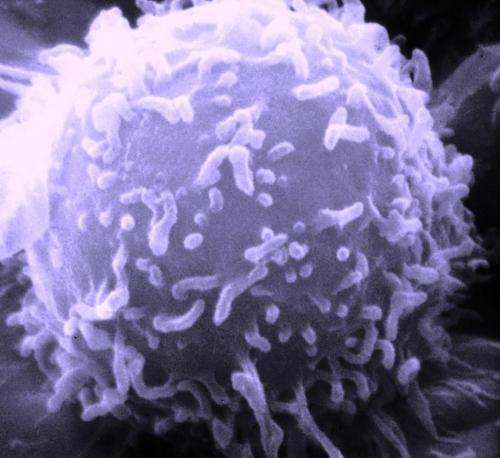Fluorescent nanomedicine can guide tumor removal, kill remaining cancer cells

Oregon State University scientists have developed a nanomedicine platform for cancer that can help doctors know which tissue to cut out as well as kill any malignant cells that can't be surgically removed.
The platform allows for greater precision and thoroughness in cancer treatment.
Here's how it works:
Nanoparticles tightly loaded with a dye compound are administered systemically - injected intravenously or into the peritoneum, the abdominal cavity. When they reach the tumor site, the tumor's intracellular environment effectively flips the switch on the compound's fluorescence.
That enables detection by a near infrared (NIR) imaging system that helps surgeons know in real time what needs to be removed.
Any glowing areas that can't be cut out are given phototherapy - irradiated with a near infrared laser, which causes the nanoparticles to heat up and kill the residual cancer cells.
The findings by researchers in the OSU/OHSU College of Pharmacy and OSU College of Veterinary Medicine were published this month in Theranostics.
The nanomedicine platform consists of silicon naphthalocyanine (SiNc) densely packed in biodegradable PEG-PCL nanoparticles. Because the SiNc is engineered to be non-fluorescent initially - until the tumor activates the fluorescence by loosening the packing - it doesn't cause any non-cancerous tissue to glow.
Corresponding authors Olena Taratula and Oleh Taratula of the Department of Pharmaceutical Sciences and their collaborators evaluated the platform in vitro and in two different mouse models, including one that mimicked ovarian intraperitoneal metastasis.
The research team operated on the mice using real-time imaging, which showed that the new nanoparticles are compatible with a standard, FDA-approved imaging system. The efficacy of the phototherapy was also demonstrated in vivo.
"The nanoplatform system is quite simple but quite effective," Olena Taratula said.
Subsequent laboratory testing of the platform will include rats, she said, followed by testing on dogs that are already scheduled for cancer surgeries at the College of Veterinary Medicine.
"They're going to do surgery on those dogs anyway, and they can use our nanomedicine platform as an additional tool to see if they can identify the cancer cells," Taratula said.
More information: Xiaoning Li et al, A Tumor-Activatable Theranostic Nanomedicine Platform for NIR Fluorescence-Guided Surgery and Combinatorial Phototherapy, Theranostics (2017). DOI: 10.7150/thno.21209
Provided by Oregon State University



















